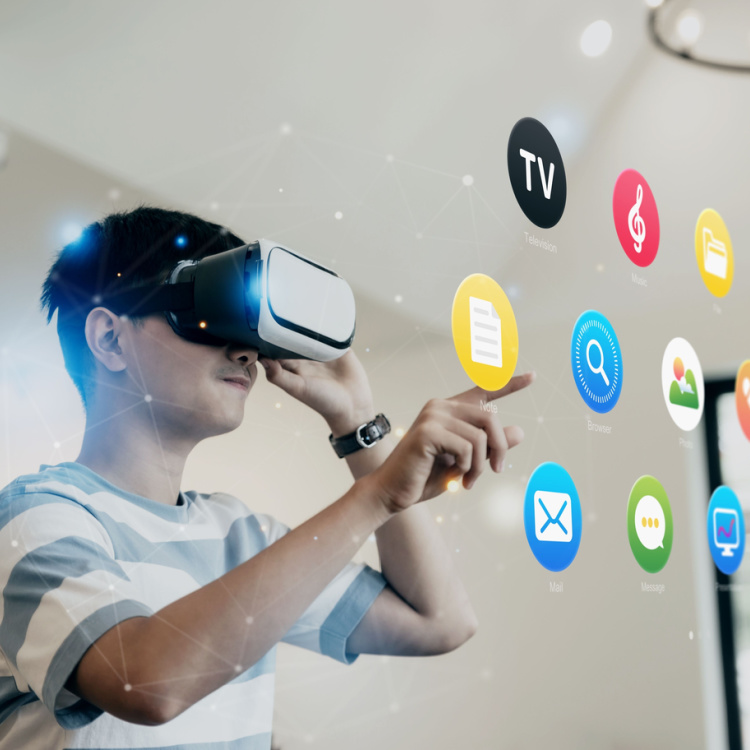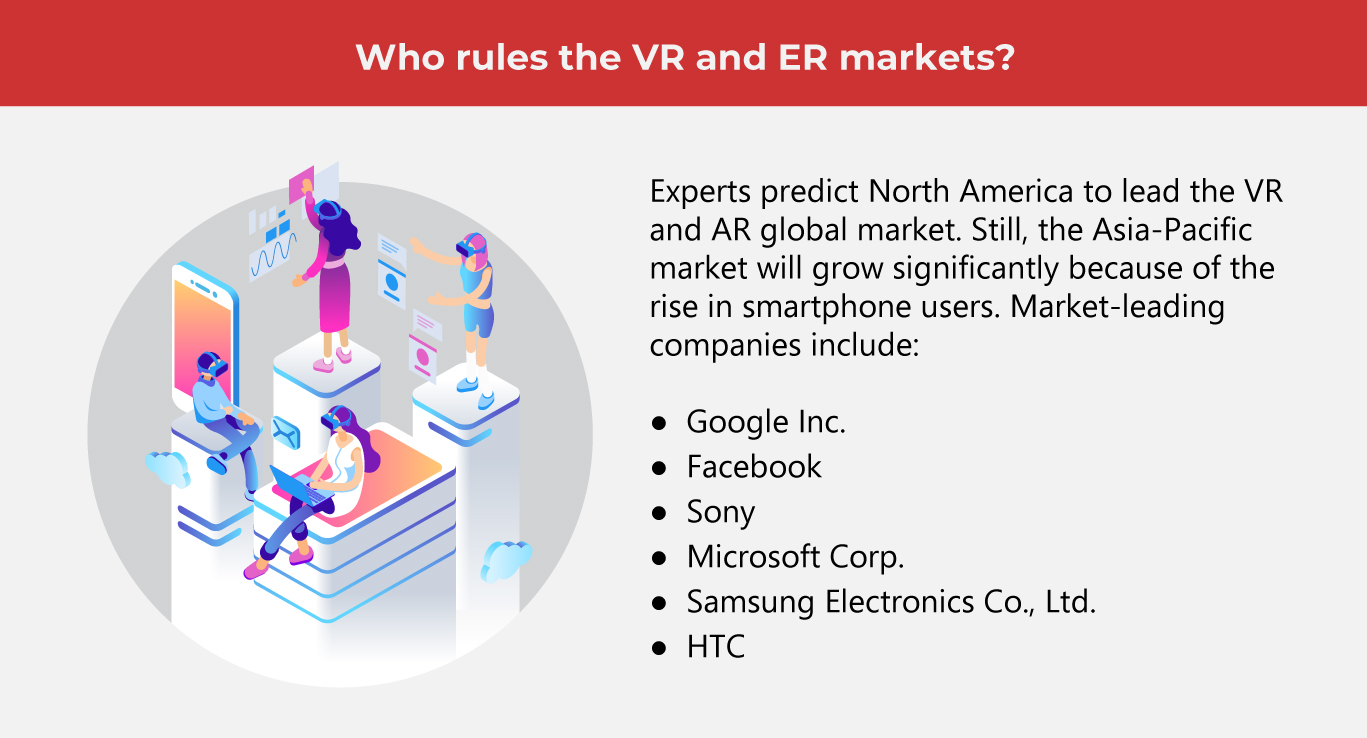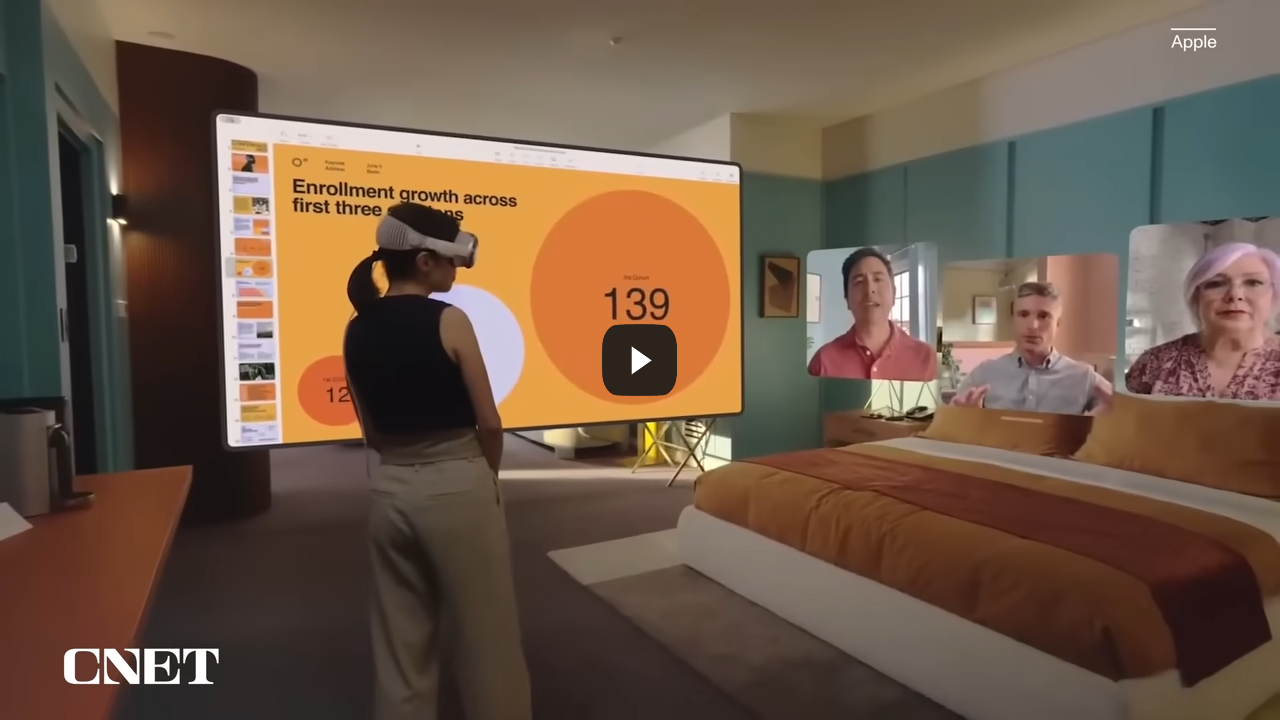VR and AR Trends That Shape Industries

Virtual reality (VR) and augmented reality (AR) may have momentarily taken a backseat, but in 2024, they are revving up. Learn the trends propelling these technologies to widespread adoption, leveraging cutting-edge solutions that transform how we live and do things.
The virtual and augmented reality market is expected to grow from over US$38 billion in 2022 to an impressive 41% to US$856.2 billion by 2031.
But what is fueling this growth? Consumers are looking for more immersive experiences beyond the flat screen to an online environment that fosters deeper interactions and engagement. This is the metaverse, a virtual space where users can socialize and play in real time. It mixes physical and digital realm elements, which VR and AR can help make possible.
Here are some of the factors driving these technologies' growth:
- Gaming's popularity
Increasing demand for immersive gaming spurs companies to invest in advanced VR headsets and AR devices. Gaming has become an experimental ground for these technologies, resulting in innovative interaction models and storytelling techniques.
- Increased use of smartphones
Robust processors and high-definition displays have become salient features of smartphones, enabling VR and AR applications. This has made such technologies accessible to a wider range of consumers.
- Cost-efficient solutions
Software and development tools have become affordable, enabling developers to produce AR and VR content more efficiently and at reduced costs. Thanks to open-source platforms, the creation process is more widely accessible, eliminating significant upfront capital.
- Boosted use among businesses
Because these technologies have diverse applications, more and more businesses are adopting them for product design and development, customer engagement, remote collaboration and many more.
The more affordable VR and ER become, the more users it will attract. However, manufacturers should always prioritize providing impeccable user experiences to satisfy customers. 
Top 7 AR & VR Trends this 2024
Game consoles, fitness gadgets, and experimental tools typically employ VR and AR. But in 2024, more companies are exploring these technologies, developing more apps and products that, in time, may make VR and AR a regular fixture in our daily activities. Here are the trends that shape these immersive tech innovations:
- Artificial intelligence (AI) integration
AI has helped in the realistic reproduction of human features and other objects, making the virtual environment even more believable. Designers can also reduce their 3D world-building time with AI. Businesses use AI for their chatbots, which can simulate human conversation to a certain extent. This technology is useful in crafting authentic, speech-enabled characters in simulated worlds and translating text in real time.
- Sensory technology
Aside from seeing the virtual world in lifelike dimensions and colors, and hearing real-world sounds, the next step is to employ other senses like touch and smell. Device makers are developing haptic technology like gloves and suits that let users feel the weight and pressure of manipulating objects. Want to smell the flowers in your virtual garden? Don't worry; manufacturers are busy creating gadgets that disperse scented mists via a mask.
- Blended use of AR and VR
AR and VR are different technologies that enhance immersive virtual experiences. While VR creates the simulated environment, AR elevates it through digital elements. When used together, they can create an even richer environment. For example, a live event can simultaneously cater to two audiences. While the virtual attendees can wear VR headsets to boost their viewing and listening experience, the in-person audience can wear AR glasses and see the remote crowd beside them.
- Small but powerful devices
Light and powerful device technology make AR and VR more accessible and portable. With on-the-go devices, users can enjoy AR and VR-rich experiences without being tied to heavy equipment. Smaller devices may also have lower prices, making them more affordable. Because of their compact size, they can be easily integrated into everyday gadgets, such as smartphones and tablets.
- Remote collaboration
Remote work rose during the pandemic but remains a business norm and employee preference. With AR and VR, remote collaboration becomes richer through immersive settings where workers can coordinate, generate ideas and create experiences like in the physical world. With this enhanced interaction and connectedness, work productivity is likely to increase.
- Cybersecurity
The internet always has its risks, and its immersive version can pose even more dangers. For AR and VR to take off, industry players should set up safeguards and procedures to squelch or reduce its harmful potential. Priorities should include child protection, user consent, data security, and using these technologies responsibly to balance advancement and ethical sensibilities.
- Adoption of industries
AR and VR can revolutionize industries by streamlining operations, boosting customer engagement and lowering operational costs. By leveraging these technologies, companies can increase competitiveness and offer flexible solutions to meet changing customer expectations and needs. Some industries impacted by AR and VR are:
- Retail
Some consumers hesitate to buy clothes and shoes online because they can't try them on. Enter immersive retail, which lets potential buyers virtually fit outfits and even glasses. Not sure if the furniture matches your interiors? Big-name stores like Target and IKEA use AR to let online shoppers see what fixtures would look like in a room.
A PricewaterhouseCoopers survey found that VR beginners are likely to learn four times faster than those who were taught in classrooms. In fact, the VR-trained students are 275% more self-assured in applying their knowledge in real-life situations. Thanks to dynamic educational settings, students better grasp skills and information.
Aside from training medical professionals, AR and VR are used for surgery assistance, pain management, disease detection, and mental health interventions. By boosting the efforts of medical professionals, these technologies also enhance patient outcomes.
These technologies improve employee training, especially response to dangerous situations. AR, in particular, can optimize machine maintenance that guarantees business continuity and cost savings. Meanwhile, remote assistance for off-site workers saves time and resources since experts can solve problems without deployment.
AR can upgrade marketing techniques and help drivers through remote assistance and diagnostics, parking spot detection, and heads-up displays that help navigate and identify road hazards.
Hardware and software innovations make ground-breaking AR and VR applications possible, changing the ways we work, interact, and learn. As more and more companies and consumers embrace these technologies, they will evolve faster, resulting in game-changing experiences that effectively meld physical and virtual realities. As one of the Top 20 EMS companies in the world, IMI has over 40 years of experience in providing electronics manufacturing and technology solutions.
As one of the Top 20 EMS companies in the world, IMI has over 40 years of experience in providing electronics manufacturing and technology solutions.
We are ready to support your business on a global scale.
Our proven technical expertise, worldwide reach, and vast experience in high-growth and emerging markets make us the ideal global manufacturing solutions partner.
Let's work together to build our future today.
Other Blog




